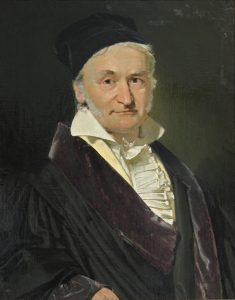
In these times of pandemic that we are living through, it is worth remembering a mathematical problem whose origins the tradition wants to situate in another plague. Specifically, the one that struck Greece in the 5th century BC and possibly cost Pericles his life. In the most critical moments of that pandemic, a delegation asked the oracle of Apollo at Delos how to put an end to the plague that was decimating the population; the curious answer was that the cubic altar dedicated to the god had to be doubled: “When the god announced to the people of Delos through the oracle that in order to put an end to the plague they had to build an altar twice the size of the existing one,” wrote Theon of Smyrna a few centuries later, “they fell into great perplexity, trying to find out how a solid could be duplicated, going to ask Plato about the problem. He told them that the god had given this answer not because he wanted an altar of double size, but because he wished, by presenting this problem to them, to blame the Greeks for their neglect of mathematics and their contempt for geometry”. Plato was right, if Plato really said such a thing, for the greatest mathematical successes of the Greeks came after their great successes in philosophy, politics, literature, sculpture or architecture – Euclid, Archimedes or Apollonius came after Socrates, Plato, Aristotle, Pericles or Phidias.
The problem of doubling a cube was one of the secrets that most fascinated the Greeks. Specifically, there were three problems that became an object of desire for them and, although they did not manage to solve them, they motivated an important part of their geometrical discoveries; for all this they were called “the three classical problems of Greek mathematics”, and consisted of developing constructions with ruler and compass to (1) square the circle, (2) duplicate the cube and (3) trisect an angle. To these three was also added the problem of constructing regular polygons with ruler and compass. It must be stressed that what makes the three classical problems so difficult to solve – in fact impossible – is to respect the rule that only ruler and compass can be used. Otherwise, the problems admit more or less ingenious solutions and, in fact, the Greeks found quite a few. As I have just written, the three classical problems are (in general) impossible to solve, and so is the construction of regular polygons, unless their number of sides is of a very particular shape – as I will describe below. But proving it took more than two thousand years, and the solution came from algebra, not geometry. Therein lies much of the magic of mathematics: seemingly disconnected parts are linked together in a way that is both intense and deep, so that an obviously geometrical problem, such as these particular ruler-and-compass constructions, can require purely algebraic techniques to be solved.
Apart from its more or less mythological origin, the doubling of the cube was a natural step after the first achievements of Greek mathematics. For example, a simple application of the Pythagorean theorem says that the diagonal of a square solves the problem of doubling it; similarly, one can see that the diagonal of a cube serves, not to double the cube, but to triple the area of the square that is the face of the cube. How, then, could the volume of a cube be doubled?
The most important curves of the Greek world, the conics, arose, in part, to provide an answer to the problem of doubling the cube. The doubling of the cube is equivalent to that of the construction of two proportional averages, that is: given two positive numbers \(a\) and \(b\) with \(a<b\), inserting between them \(x\) and \(y\), \(x<y\), so that \(\frac{a}{x}=\frac{x}{y}=\frac{y}{b}\). This gives
$$ x^2=ay, y^2=bx, xy=ab,$$
so \(x^3=a^2b\); taking \(a=d, b=2d\), we have \(x^3=2d^3\), so that \(x\) is the length of the side of the cube whose volume is twice the cube of side \(d\). Now, the equations $$ x^2=ay, y^2=bx, xy=ab,$$
are those of two parabolas and a hyperbola, respectively, so that the problem of doubling the cube can be solved in terms of the intersection of conics (this was discovered by Menecmus, a Greek mathematician who lived in the 4th century B.C. and who is said, perhaps with little foundation, to have been the tutor of Alexander the Great; of course, Menecmus did not use the above symbology, nor did he use the nomenclature of parabola or hyperbola, terms that would be coined by Apollonius a little more than a century later).

The impossibility of duplicating a cube using ruler and compass was finally demonstrated in the 19th century: some two millennia after the problem was proposed! Although the impossibility was not proved by Gauss, the solution bears the stamp of his genius.
Constructions with ruler and compass can be described in algebraic terms: they require intersections of straight lines, straight lines and circles, or two circles, which is algebraically equivalent to solving systems of two linear equations, linear and quadratic, or two quadratic equations. Therefore, in the description of the coordinates of the points of the plane that can be constructed with ruler and compass, only the operations of arithmetic – additions, products and divisions – and square roots can be involved. For example, the point with coordinates \(\left(\frac{\sqrt 5}{4}-\frac{1}{4},\frac{\sqrt 2\sqrt{5+\sqrt 5}}{4}\right)\) can be obtained by means of ruler and compass; if one has the patience to multiply the complex number that represents that point five times by itself, one will obtain the result 1; that means that that complex number is a root of the equation \(x^5-1\), and, therefore, one of the vertices of a regular pentagon inscribed in the circumference of radius 1, which assures us that, as the Greeks already knew, the regular pentagon can be constructed with ruler and compass.
The top result in section VII of Gauss’s Disquisitiones Arithmeticae (1801) shows that a regular polygon of \(n\) sides can always be constructed with straightedge and compass when
$$n=2^np_1p_2\cdots p_k,$$
where \(p_1,p_2,\cdots ,p_k\), are different Fermat prime numbers –that is, prime numbers with the form \(2^{2^m}+1\)–. To do this, Gauss showed that the solutions of \(x^p-1\), being \(p\) prime, are rational expressions of solutions of equations whose degrees are the prime divisors of \(p-1\), and whose coefficients are rational expressions of the solutions of the preceding equations, which also end up being solvable by radicals. When the prime \(p\) has the form \(2^{2^m}+1\), all the equations considered have degree 2, and therefore the solutions of \(x^p-1\) can be expressed by iterating arithmetical operations and square roots, and are therefore constructible with ruler and compass. Gauss also pointed out, though without proving it – “the limits of this work preclude such a demonstration here” – that this particular form of the number \(n\) is not only sufficient but also necessary.
And, as an application, Gauss showed how a 17-sided polygon –\(2^{2^2}+1\) sides– can be constructed. In order to give relevance to his construction, Gauss added: “It is indeed astonishing that, although the geometrical divisibility of a circle into 3 and 5 parts was already known in Euclid’s time, nothing has been added to this discovery in 2,000 years. And that all geometricians have affirmed that, except for this number of parts and those derived directly from them, there are no others that can be geometrically constructed”. According to Gauss’s diary, he made his discovery on 30 March 1796; he was then 19 years old (in a TV show of the series Universo Matemático, produced by TVE and presented by Antonio Pérez Sanz, you can see Gauss’s construction; it is easy to find it on the internet, for example here).
The French mathematician Pierre Wantzel (1814-1848) showed in 1837 that Gauss’s condition is indeed also necessary for the construction of regular n-sided polygons. In the same article, Wantzel proved the impossibility of two of the three venerable problems that had so interested the Greeks: the doubling of the cube and the trisection of the angle. Wantzel, following Gauss, worked with what we now call field extensions. The coordinates of a number that can be constructed with ruler and compass form a tower where on each level there are only arithmetical operations and occasionally a square root of the elements of the preceding levels; if we form field extensions with these levels – adding the square root of the preceding elements, if any -, we will finally obtain an extension whose degree with respect to the starting field, the rationals in this case, will necessarily be a power of 2. Now, the equation associated with the doubling of the cube is \(x^3-2=0\), which is irreducible -it cannot be factored in polynomials of lesser degree with rational coefficients-. Therefore, the field obtained by adding \(\sqrt[3]{2}\) to the rationals has order 3, which is not a power of 2, so you cannot duplicate the cube with a ruler and compass. Wantzel also showed that something similar happens with the trisection of the angle.
The proof of the impossibility of squaring the circle still took half a century to be achieved. The equation associated with the problem is \(x^2-\pi=0\), but it does not work because its coefficients are not rational numbers – the irrationality of \(\pi\) had been proved by Johann Lambert in 1761. So in order to be able to apply the previous arguments it was first necessary to elucidate whether there was a polynomial with integer coefficients of which \(\pi\) was the root. The numbers that satisfy this condition are called algebraic, and those that do not are called transcendent. The transcendence of \(e\) was proved by Hermite in 1873 and, following his trail, that of \(\pi\) was proved by Ferdinand Lindemann (1852-1939) in 1882. From this follows the impossibility of squaring the circle.
References
A.J. Durán, Crónicas matemáticas, Crítica, Barcelona, 2018.

Leave a Reply